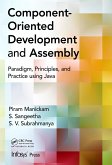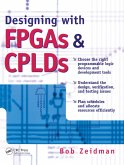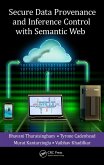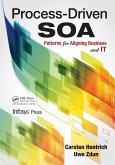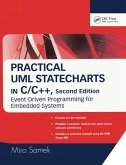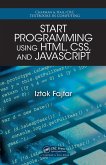Piram Manickam, S. Sangeetha, S. V. Subrahmanya
Component- Oriented Development and Assembly (eBook, PDF)
Paradigm, Principles, and Practice using Java
75,95 €
75,95 €
inkl. MwSt.
Sofort per Download lieferbar

38 °P sammeln
75,95 €
Als Download kaufen

75,95 €
inkl. MwSt.
Sofort per Download lieferbar

38 °P sammeln
Jetzt verschenken
Alle Infos zum eBook verschenken
75,95 €
inkl. MwSt.
Sofort per Download lieferbar
Alle Infos zum eBook verschenken

38 °P sammeln
Piram Manickam, S. Sangeetha, S. V. Subrahmanya
Component- Oriented Development and Assembly (eBook, PDF)
Paradigm, Principles, and Practice using Java
- Format: PDF
- Merkliste
- Auf die Merkliste
- Bewerten Bewerten
- Teilen
- Produkt teilen
- Produkterinnerung
- Produkterinnerung

Bitte loggen Sie sich zunächst in Ihr Kundenkonto ein oder registrieren Sie sich bei
bücher.de, um das eBook-Abo tolino select nutzen zu können.
Hier können Sie sich einloggen
Hier können Sie sich einloggen
Sie sind bereits eingeloggt. Klicken Sie auf 2. tolino select Abo, um fortzufahren.

Bitte loggen Sie sich zunächst in Ihr Kundenkonto ein oder registrieren Sie sich bei bücher.de, um das eBook-Abo tolino select nutzen zu können.
This book supplies comprehensive coverage of the principles, practice, and paradigm of component-oriented development and assembly. The first part provides the conceptual foundation for component-oriented software.
- Geräte: PC
- mit Kopierschutz
- eBook Hilfe
Andere Kunden interessierten sich auch für
![Social Software Engineering (eBook, PDF) Social Software Engineering (eBook, PDF)]() Jessica KeyesSocial Software Engineering (eBook, PDF)58,95 €
Jessica KeyesSocial Software Engineering (eBook, PDF)58,95 €![Component- Oriented Development and Assembly (eBook, ePUB) Component- Oriented Development and Assembly (eBook, ePUB)]() Piram ManickamComponent- Oriented Development and Assembly (eBook, ePUB)75,95 €
Piram ManickamComponent- Oriented Development and Assembly (eBook, ePUB)75,95 €![Designing with FPGAs and CPLDs (eBook, PDF) Designing with FPGAs and CPLDs (eBook, PDF)]() Bob ZeidmanDesigning with FPGAs and CPLDs (eBook, PDF)58,95 €
Bob ZeidmanDesigning with FPGAs and CPLDs (eBook, PDF)58,95 €![Secure Data Provenance and Inference Control with Semantic Web (eBook, PDF) Secure Data Provenance and Inference Control with Semantic Web (eBook, PDF)]() Bhavani ThuraisinghamSecure Data Provenance and Inference Control with Semantic Web (eBook, PDF)60,95 €
Bhavani ThuraisinghamSecure Data Provenance and Inference Control with Semantic Web (eBook, PDF)60,95 €![Process-Driven SOA (eBook, PDF) Process-Driven SOA (eBook, PDF)]() Carsten HentrichProcess-Driven SOA (eBook, PDF)60,95 €
Carsten HentrichProcess-Driven SOA (eBook, PDF)60,95 €![Practical UML Statecharts in C/C++ (eBook, PDF) Practical UML Statecharts in C/C++ (eBook, PDF)]() Miro SamekPractical UML Statecharts in C/C++ (eBook, PDF)58,95 €
Miro SamekPractical UML Statecharts in C/C++ (eBook, PDF)58,95 €![Start Programming Using HTML, CSS, and JavaScript (eBook, PDF) Start Programming Using HTML, CSS, and JavaScript (eBook, PDF)]() Iztok FajfarStart Programming Using HTML, CSS, and JavaScript (eBook, PDF)103,95 €
Iztok FajfarStart Programming Using HTML, CSS, and JavaScript (eBook, PDF)103,95 €-
-
-
This book supplies comprehensive coverage of the principles, practice, and paradigm of component-oriented development and assembly. The first part provides the conceptual foundation for component-oriented software.
Hinweis: Dieser Artikel kann nur an eine deutsche Lieferadresse ausgeliefert werden.
Dieser Download kann aus rechtlichen Gründen nur mit Rechnungsadresse in A, B, BG, CY, CZ, D, DK, EW, E, FIN, F, GR, HR, H, IRL, I, LT, L, LR, M, NL, PL, P, R, S, SLO, SK ausgeliefert werden.
Hinweis: Dieser Artikel kann nur an eine deutsche Lieferadresse ausgeliefert werden.
Produktdetails
- Produktdetails
- Verlag: Taylor & Francis eBooks
- Seitenzahl: 298
- Erscheinungstermin: 4. Dezember 2013
- Englisch
- ISBN-13: 9781466581005
- Artikelnr.: 40345095
- Verlag: Taylor & Francis eBooks
- Seitenzahl: 298
- Erscheinungstermin: 4. Dezember 2013
- Englisch
- ISBN-13: 9781466581005
- Artikelnr.: 40345095
- Herstellerkennzeichnung Die Herstellerinformationen sind derzeit nicht verfügbar.
Piram Manickam is an ardent technologist. During the past two decades he has worked with many software development teams and built a number of systems using various development platforms. He has a special interest in object-oriented design. He has authored many technical articles. Manickam has been practicing and teaching component-oriented development and assembly (CODA) for the last few years. He is a technical consultant and architect on many software component-based projects at Infosys. Manickam is a graduate of electronics and communication engineering from Regional Engineering College (currently NIT) in Tiruchirapalli, India.
S. Sangeetha has been in a senior technical architect role at Infosys. She has been working on Java, Java EE-related technologies, for more than 14 years. She is involved in the design and development of prototypes and POCs on several enterprise application solutions. She is also involved in grooming architects at Infosys through an Initiative called Connect Architecture. Her responsibilities include designing, developing, and delivering Java EE-related courses to various roles. She has been practicing and teaching component-oriented development and assembly (CODA) for the last few years. Sangeetha has authored many technical articles and coauthored a book titled J2EE Architecture. She has a bachelor's degree in engineering (electronics communication engineering) from Madras University.
S. V. Subrahmanya (also known as SVS) has more than 25 years of experience in the information technology industry and academics. SVS is currently working at Infosys Limited as vice president and is a research fellow at Infosys. He heads the E-Commerce Research Labs. He is also responsible for competency development of employees across the technical spectrum including new upcoming areas of technology at Infosys. SVS has published many papers in reputed journals and international conferences. He has coauthored books titled Discrete Structures, Web Services: An Introduction (Tata McGraw-Hill, 2004), J2EE Architecture (Tata McGraw-Hill, 2005), and Enterprise IT Architecture (Wiley India, 2006).
S. Sangeetha has been in a senior technical architect role at Infosys. She has been working on Java, Java EE-related technologies, for more than 14 years. She is involved in the design and development of prototypes and POCs on several enterprise application solutions. She is also involved in grooming architects at Infosys through an Initiative called Connect Architecture. Her responsibilities include designing, developing, and delivering Java EE-related courses to various roles. She has been practicing and teaching component-oriented development and assembly (CODA) for the last few years. Sangeetha has authored many technical articles and coauthored a book titled J2EE Architecture. She has a bachelor's degree in engineering (electronics communication engineering) from Madras University.
S. V. Subrahmanya (also known as SVS) has more than 25 years of experience in the information technology industry and academics. SVS is currently working at Infosys Limited as vice president and is a research fellow at Infosys. He heads the E-Commerce Research Labs. He is also responsible for competency development of employees across the technical spectrum including new upcoming areas of technology at Infosys. SVS has published many papers in reputed journals and international conferences. He has coauthored books titled Discrete Structures, Web Services: An Introduction (Tata McGraw-Hill, 2004), J2EE Architecture (Tata McGraw-Hill, 2005), and Enterprise IT Architecture (Wiley India, 2006).
Component Paradigm. Software Paradigms. Component Oriented Software
Paradigm. Component Principles. Theory of Software Components. Software
Component Models and Frameworks. Principles of Component Based Software
Engineering. Component Practices. Component Oriented Development and
Assembly using OSGi. Component Oriented Development and Assembly using SCA.
Architecting Component Based Systems. Component Design Principles &
Patterns. Developing Components. Assembling Components. Testing Components
and Component-Based Systems. Appendices.
Paradigm. Component Principles. Theory of Software Components. Software
Component Models and Frameworks. Principles of Component Based Software
Engineering. Component Practices. Component Oriented Development and
Assembly using OSGi. Component Oriented Development and Assembly using SCA.
Architecting Component Based Systems. Component Design Principles &
Patterns. Developing Components. Assembling Components. Testing Components
and Component-Based Systems. Appendices.
Component Paradigm. Software Paradigms. Component Oriented Software
Paradigm. Component Principles. Theory of Software Components. Software
Component Models and Frameworks. Principles of Component Based Software
Engineering. Component Practices. Component Oriented Development and
Assembly using OSGi. Component Oriented Development and Assembly using SCA.
Architecting Component Based Systems. Component Design Principles &
Patterns. Developing Components. Assembling Components. Testing Components
and Component-Based Systems. Appendices.
Paradigm. Component Principles. Theory of Software Components. Software
Component Models and Frameworks. Principles of Component Based Software
Engineering. Component Practices. Component Oriented Development and
Assembly using OSGi. Component Oriented Development and Assembly using SCA.
Architecting Component Based Systems. Component Design Principles &
Patterns. Developing Components. Assembling Components. Testing Components
and Component-Based Systems. Appendices.


